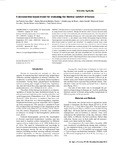Use este identificador para citar ou linkar para este item:
http://www.alice.cnptia.embrapa.br/alice/handle/doc/978404Registro completo de metadados
| Campo DC | Valor | Idioma |
|---|---|---|
| dc.contributor.author | MAIA, A. P. de | pt_BR |
| dc.contributor.author | OLIVEIRA, S. R. de M. | pt_BR |
| dc.contributor.author | MOURA, D. J. de | pt_BR |
| dc.contributor.author | SARUBBI, J. | pt_BR |
| dc.contributor.author | VERCELLINO, R. do A. | pt_BR |
| dc.contributor.author | MEDEIROS, B. B. L. | pt_BR |
| dc.contributor.author | GRISKA, P. R. | pt_BR |
| dc.date.accessioned | 2014-02-04T11:11:11Z | pt_BR |
| dc.date.available | 2014-02-04T11:11:11Z | pt_BR |
| dc.date.created | 2014-02-04 | pt_BR |
| dc.date.issued | 2013 | pt_BR |
| dc.identifier.citation | Scientia Agricola, Piracicaba, v. 70, n. 6, p. 377-383, Nov./Dec. 2013. | pt_BR |
| dc.identifier.uri | http://www.alice.cnptia.embrapa.br/alice/handle/doc/978404 | pt_BR |
| dc.description | ABSTRACT: Thermal comfort is of great importance in preserving body temperature homeostasis during thermal stress conditions. Although the thermal comfort of horses has been widely studied, there is no report of its relationship with surface temperature (TS). This study aimed to assess the potential of data mining techniques as a tool to associate surface temperature with thermal comfort of horses. TS was obtained using infrared thermography image processing. Physiological and environmental variables were used to defi ne the predicted class, which classifi ed thermal comfort as ?comfort? and ?discomfort?. The variables of armpit, croup, breast and groin TS of horses and the predicted classes were then subjected to a machine learning process. All variables in the dataset were considered relevant for the classifi cation problem and the decision-tree model yielded an accuracy rate of 74 %. The feature selection methods used to reduce computational cost and simplify predictive learning decreased model accuracy to 70 %; however, the model became simpler with easily interpretable rules. For both these selection methods and for the classifi cation using all attributes, armpit and breast TS had a higher power rating for predicting thermal comfort. Data mining techniques show promise in the discovery of new variables associated with the thermal comfort of horses. | pt_BR |
| dc.language.iso | eng | eng |
| dc.rights | openAccess | eng |
| dc.subject | Mineração de dados | pt_BR |
| dc.subject | Conforto térmico de cavalos | pt_BR |
| dc.subject | Termografia | pt_BR |
| dc.title | A decision-tree-based model for evaluating the thermal comfort of horses. | pt_BR |
| dc.type | Artigo de periódico | pt_BR |
| dc.date.updated | 2014-02-06T11:11:11Z | pt_BR |
| dc.subject.thesagro | Termorregulação | pt_BR |
| dc.subject.nalthesaurus | Surface temperature | pt_BR |
| dc.subject.nalthesaurus | Thermoregulation | pt_BR |
| riaa.ainfo.id | 978404 | pt_BR |
| riaa.ainfo.lastupdate | 2014-02-06 | pt_BR |
| dc.contributor.institution | ANA PAULA DE ASSIS MAIA, Unicamp, Feagri; STANLEY ROBSON DE MEDEIROS OLIVEIRA, CNPTIA; DANIELLA JORGE DE MOURA, Unicamp, Feagri; JULIANA SARUBBI, Universidade Federal de Santa Maria, RS; RIMENA DO AMARAL VERCELLINO, Unicamp, Feagri; BRENDA BATISTA LEMOS MEDEIROS, Unicamp, Feagri; PAULO ROBERTO GRISKA, Faculdade de Jaguariúna, SP. | pt_BR |
| Aparece nas coleções: | Artigo em periódico indexado (CNPTIA)  | |
Arquivos associados a este item:
| Arquivo | Descrição | Tamanho | Formato | |
|---|---|---|---|---|
| 2013Scientiadatamininghorses.pdf | 2,01 MB | Adobe PDF |  Visualizar/Abrir |









